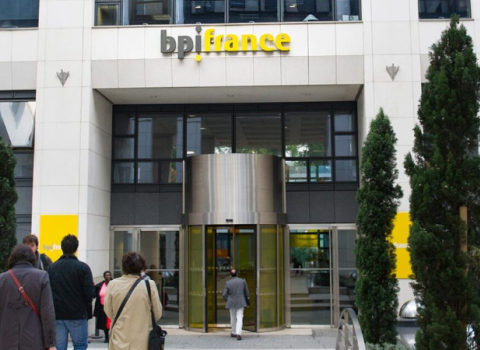Every organisation needs one to get Horizon Europe funding, but not all equality plans are made equal

Photo credits: ShendArt / BigStock
Gender equality plans (GEPs) are a requirement for all institutions participating in the EU’s Horizon Europe research programme, but what makes a plan effective?
The EU has funded several projects trying to understand what is required, in a bid to improve women’s representation in science. One of these is the Horizon 2020 project ATHENA, which is working on a tool kit to help institutions make better plans that lead to real change.
Women are under-represented in science, especially in more senior positions. In 2018, 48.1% of doctoral graduates in Europe were women, yet they accounted for only 32.8% of researchers, according to EU’s latest She Figures. The EU’s framework programmes point to inequalities in who gets to call the shots: in Horizon 2020, 42% of project participants were women but they made up only 23% of project coordinators, the most senior role.
Data on women’s participation weren’t always systemically collected and analysed before gender equality plans were introduced as a requirement in Horizon Europe. The first step of drafting a plan is gathering data, and this has helped expose the status quo.
Romana Jordan, assistant director for EU affairs at the Jožef Stefan Institute in Slovenia, has been working on her institution’s gender equality plan as part of the ATHENA project. “They do deliver, and they’ve made a big change in our institute. We were all very comfortable here and everyone thought that we’re a merit-based institute, and no one checked the numbers. With our systematic approach, we were surprised with our findings,” she tells Science|Business.
All the knowledge Jordan and her colleagues built based on their own experience is now feeding into a tool kit for drafting gender equality plans, which you can find here.
Getting to grips with reality
Some see gender equality plans as a box ticking exercise, yet another of the myriad hoops Horizon Europe applicants have to jump through to access taxpayer money, alongside open science policies and environmental protection through the do no significant harm (DNSH) principle.
But the goal is to build lasting change and to make this happen, applicants must be serious about their plans. “If the ambition of an institution to prepare one was just to fulfil the demands of the European Commission, that’s not okay – it’s about the why,” says Jordan.
Yet even a requirement can quickly turn into an institutional policy. After several years of work in her institution, Ana Kaminska, who represents Poland’s Jan Kochanowski University in the ATHENA project, says, “We noticed the change that we don’t see it only as a requirement for applying but also as a socially responsible policy in our institutions.”
For many, the most difficult part of the process is data gathering. Each organisation must bring together and make sense of information that is often held separately, such as financial and human resources files. There is also a requirement to hold focus groups and interviews, to try to map the situation and understand how it affects the various strands of work, from project implementation to research programming.
In the next step of preparing a plan, it’s key to understand which indicators are important and why. “We have to take into account the circumstance of each country and institution and the possibilities of each institution. We may have a lot of ambitions, but we need to be aware of the reality of implementation,” says Kaminska.
Implementing plans
There are areas a gender equality plans should address: work-life balance and organisational culture; gender balance in leadership and decision-making; gender equality in recruitment and career progression; integration of the gender dimension into research and teaching content; and measures again gender-based violence.
The exact recipe depends on the institution. For engineering schools, raising awareness is an important part of the puzzle. “We needed to organise a lot of lectures [and] workshops and raise awareness of these issues in a very feasible way,” says Jordan, who has led the effort in natural sciences, life sciences and engineering institute.
For organisations that focus on social sciences, drafting a plan might be a very different endeavour, with more emphasis falling on how to better integrate the gender dimension in research.
But while a plan will be institution-specific, learning from others is helpful. ATHENA’s members diagnosed their own needs, but joint training and monthly support meetings were helpful in keeping motivation and gathering inspiration.
For some, mutual learning is simply the way research works. Jožef Stefan Institute wasn’t the first to write a gender equality plan in Slovenia, but being the biggest in the country by a mile, it set the precedent for more action nationwide.
With the plans in place, making sure they deliver is the next challenge. Many have suggested implementation is the Achilles' heel of gender equality plans.
Kaminska says it’s too early to see if the requirement has brought on institutional change, but she hopes the robust annual monitoring system her university developed will help make sure goals are being met. And it doesn’t end here. “Now we’re working on the evaluation of the impact,” says Kaminska.
Looking to FP10
From a policy perspective, the introduction of mandatory gender equality plans for Horizon Europe applicants in 2022 was a big step forward in bringing the gender dimension to EU framework programmes.
It built on previously introduced measures, such as a rule that favours project proposals that have a more gender-balanced teams if two projects are given the same evaluation score. This was first introduced under Horizon 2020.
In the next framework programme, FP10, some want the Commission to go further. Last week, the League of European Research Universities (LERU) published a five-step call to increase the impact of gender equality plans in FP10.
These include fostering capacity-building, setting out clearer guidelines for what kind of data institutions should collect, encouraging inclusivity by integrating at least one more dimension of diversity into the plans, make all five action areas mandatory, and make sure the plan doesn’t just tick a box by introducing robust assessment mechanisms for the plans.
The demands are a combination of taking a more ambitious approach to gender equality plans and making sure the system encourages all types of institutions to do better.
More clarity is needed in data collection, for example, and LERU asks for the Commission to be more specific about what data it wants institutions to collect.
“We often note differences between members in terms of what equality, diversity and inclusion (EDI) data on faculty, staff and students, institutions may collect,” says Francesca Bucci, policy officer at LERU. “This generates a lack of clarity that is both unfortunate and unnecessary, and that hinders progress towards intersectional approaches.”
But not all institutions had the same starting point. More robust assessment is needed for the plan to take it beyond being a ‘yes/no’ box ticking exercise, but this requires the Commission to assess the plans on a case-by-case basis, without fixed benchmarks.
“The institutional landscape across Europe is very diverse. Some European universities are very far along on their EDI journey, others are not,” says Bucci. “We propose assessment should require each institution to demonstrate progress on its own GEP journey. We are not proposing fixed baselines or benchmarks for FP10.”





 A unique international forum for public research organisations and companies to connect their external engagement with strategic interests around their R&D system.
A unique international forum for public research organisations and companies to connect their external engagement with strategic interests around their R&D system.